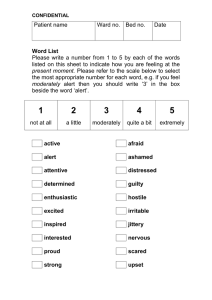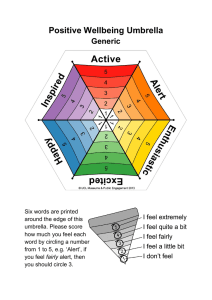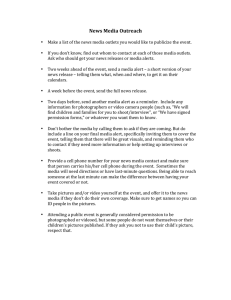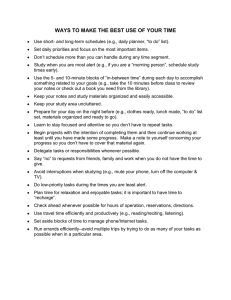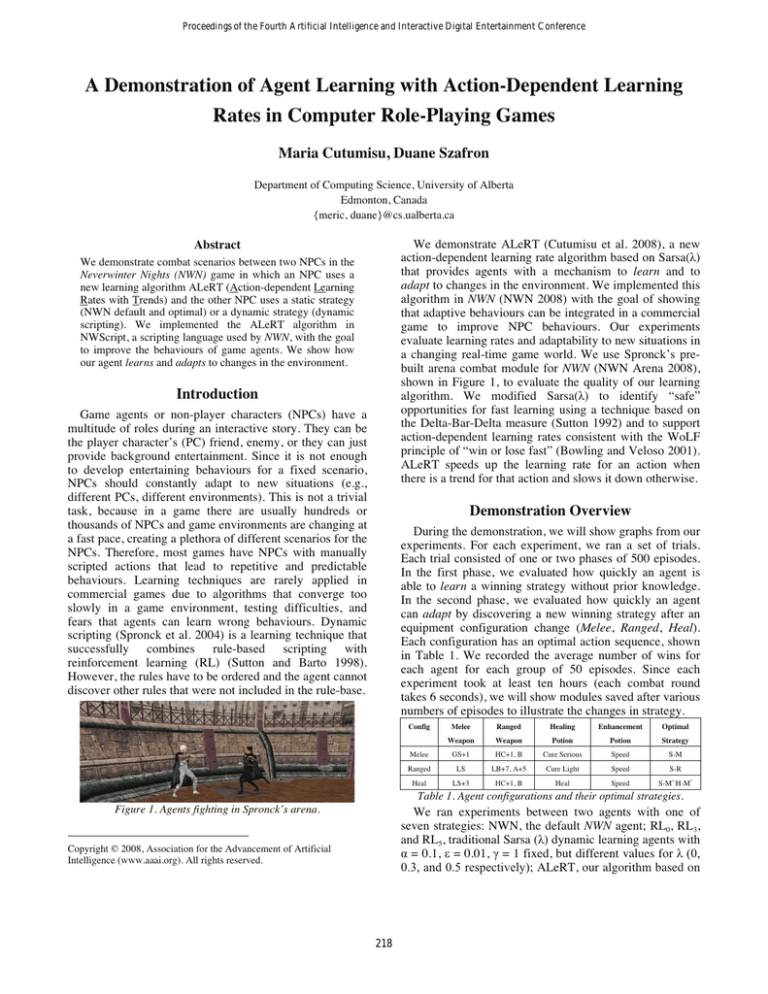
Proceedings of the Fourth Artificial Intelligence and Interactive Digital Entertainment Conference
A Demonstration of Agent Learning with Action-Dependent Learning
Rates in Computer Role-Playing Games
Maria Cutumisu, Duane Szafron
Department of Computing Science, University of Alberta
Edmonton, Canada
{meric, duane}@cs.ualberta.ca
We demonstrate ALeRT (Cutumisu et al. 2008), a new
action-dependent learning rate algorithm based on Sarsa()
that provides agents with a mechanism to learn and to
adapt to changes in the environment. We implemented this
algorithm in NWN (NWN 2008) with the goal of showing
that adaptive behaviours can be integrated in a commercial
game to improve NPC behaviours. Our experiments
evaluate learning rates and adaptability to new situations in
a changing real-time game world. We use Spronck’s prebuilt arena combat module for NWN (NWN Arena 2008),
shown in Figure 1, to evaluate the quality of our learning
algorithm. We modified Sarsa() to identify “safe”
opportunities for fast learning using a technique based on
the Delta-Bar-Delta measure (Sutton 1992) and to support
action-dependent learning rates consistent with the WoLF
principle of “win or lose fast” (Bowling and Veloso 2001).
ALeRT speeds up the learning rate for an action when
there is a trend for that action and slows it down otherwise.
Abstract
We demonstrate combat scenarios between two NPCs in the
Neverwinter Nights (NWN) game in which an NPC uses a
new learning algorithm ALeRT (Action-dependent Learning
Rates with Trends) and the other NPC uses a static strategy
(NWN default and optimal) or a dynamic strategy (dynamic
scripting). We implemented the ALeRT algorithm in
NWScript, a scripting language used by NWN, with the goal
to improve the behaviours of game agents. We show how
our agent learns and adapts to changes in the environment.
Introduction
Game agents or non-player characters (NPCs) have a
multitude of roles during an interactive story. They can be
the player character’s (PC) friend, enemy, or they can just
provide background entertainment. Since it is not enough
to develop entertaining behaviours for a fixed scenario,
NPCs should constantly adapt to new situations (e.g.,
different PCs, different environments). This is not a trivial
task, because in a game there are usually hundreds or
thousands of NPCs and game environments are changing at
a fast pace, creating a plethora of different scenarios for the
NPCs. Therefore, most games have NPCs with manually
scripted actions that lead to repetitive and predictable
behaviours. Learning techniques are rarely applied in
commercial games due to algorithms that converge too
slowly in a game environment, testing difficulties, and
fears that agents can learn wrong behaviours. Dynamic
scripting (Spronck et al. 2004) is a learning technique that
successfully combines rule-based scripting with
reinforcement learning (RL) (Sutton and Barto 1998).
However, the rules have to be ordered and the agent cannot
discover other rules that were not included in the rule-base.
Demonstration Overview
During the demonstration, we will show graphs from our
experiments. For each experiment, we ran a set of trials.
Each trial consisted of one or two phases of 500 episodes.
In the first phase, we evaluated how quickly an agent is
able to learn a winning strategy without prior knowledge.
In the second phase, we evaluated how quickly an agent
can adapt by discovering a new winning strategy after an
equipment configuration change (Melee, Ranged, Heal).
Each configuration has an optimal action sequence, shown
in Table 1. We recorded the average number of wins for
each agent for each group of 50 episodes. Since each
experiment took at least ten hours (each combat round
takes 6 seconds), we will show modules saved after various
numbers of episodes to illustrate the changes in strategy.
Config
Melee
Ranged
Healing
Enhancement
Optimal
Weapon
Weapon
Potion
Potion
Strategy
S-M
Melee
GS+1
HC+1, B
Cure Serious
Speed
Ranged
LS
LB+7, A+5
Cure Light
Speed
S-R
Heal
LS+3
HC+1, B
Heal
Speed
S-M*-H-M*
Table 1. Agent configurations and their optimal strategies.
Figure 1. Agents fighting in Spronck’s arena.
We ran experiments between two agents with one of
seven strategies: NWN, the default NWN agent; RL0, RL3,
and RL5, traditional Sarsa () dynamic learning agents with
= 0.1, = 0.01, = 1 fixed, but different values for (0,
0.3, and 0.5 respectively); ALeRT, our algorithm based on
Copyright © 2008, Association for the Advancement of Artificial
Intelligence (www.aaai.org). All rights reserved.
218
ran 500 more episodes with the new configurations. We
ran 50 trials for each of the combined configurations. The
cumulative results over 300 trials are shown in Figure 3.
ALeRT adapted faster in the first phase, but the major
advantage of ALeRT over M1 is illustrated in the second
phase. ALeRT adapted faster to changes in the
environment, defeating M1 at a rate of 80% at episode
1000. Although ALeRT may not always find the optimal
solution, it finds a policy that defeats the opponent. Figure
3 shows that RL0 did not find the optimal strategy in the
first phase against a dynamic opponent.
action-dependent learning rates that vary according to
trends, with the parameters initially set to = 0.2, = 0.02,
= 0 (fixed), and = 1; M1, Spronck’s dynamic scripting
agent (learning method 1), and, finally, OPT, the optimal
strategy for each of the configurations (e.g., speed
followed by repeated melee actions for the Melee
configuration). The x-axis indicates the episode and the yaxis indicates an agent’s average winning percentage at
that episode, over the fifty previous episodes. Each data
point represents the average win percentage over all trials.
ALeRT and M1 vs. Static Opponents
The results in Figure 2 compare ALeRT vs. a static agent
to M1 vs. the same static agent for the Melee and Ranged
configurations. We used the NWN and OPT static agents.
The upper four traces show the results against NWN. M1
had a higher final winning rate (94%) than ALeRT (70%)
against NWN for the Melee configuration and for the
Ranged configuration (90% vs. 78%). These winning rates
are more than 20% higher than ALeRT’s winning rates, but
ALeRT’s behaviour is desirable in games, where an NPC
should challenge, not defeat the PC. NWN performs poorly
since if an agent starts with a sword equipped, it only
selects from melee and heal, never from ranged or speed.
Figure 3. ALeRT and RL0 vs. M1, a dynamic opponent.
Conclusions
We demonstrate ALeRT, an algorithm that makes three
modifications to traditional RL techniques: it identifies
trends in reward sequences, modifies the learning rate over
time in an action-dependent way, and adjusts the
exploration rate according to a loss or win of each episode.
Our empirical evaluation shows that ALeRT adapts better
than a dynamic opponent in a changing environment and it
also performs well against static opponents.
References
Bowling, M., and Veloso, M. 2001. Rational and Convergent
Learning in Stochastic Games. In Proceedings of the 7th
International Joint Conference on AI, 1021-1026.
Figure 2. ALeRT and M1 vs. NWN and OPT.
The lower four traces show the results against OPT.
ALeRT converged to OPT in both configurations, but M1
did not converge to OPT for Ranged by the end of the
experiment. M1 converged more slowly than ALeRT for
Melee, since the latter won 48% after the first 100 episodes
and exceeded 46% after that. M1 won only 30% at episode
100 and did not reach 46% until episode 450 for Melee.
For Ranged, ALeRT won 44% after episode 150 and 46%
by episode 450, while M1 achieved its highest win rate
(40%) after episode 450. For simplicity, we do not show
the traces for RL0, RL3, and RL5. Although the RL agents
outperformed NWN, they did not converge to OPT.
Cutumisu, M., Szafron, D., Bowling, M., and Sutton, R. S. 2008.
Agent Learning Using Action-Dependent Learning Rates in
Computer Role-Playing Games. In Proceedings of the 4th AIIDE
Conference, October 22-24, 2008, Stanford, USA.
NWN 2008. http://nwn.bioware.com.
NWN
Arena.
2008.
http://www.cs.unimaas.nl/p.spronck
/GameAI/OnlineAdaptation3.zip.
Spronck, P., Sprinkhuizen-Kuyper, I., and Postma, E. 2004.
Online Adaptation of Game Opponent AI with Dynamic
Scripting. International Journal of Intelligent Games and
Simulation 3(1): 45–53.
ALeRT vs. M1, a Dynamic Opponent
Sutton, R.S. 1992. Adapting Bias by Gradient Descent: An
Incremental Version of Delta-Bar-Delta. In Proceedings of the
10th National Conference on AI, 171-176.
To measure the dynamic agents’ adaptability, we assessed
how fast ALeRT and M1 recover after a change in
configuration: Melee-Heal, Melee-Ranged, Ranged-Melee,
Ranged-Heal, Heal-Melee, Heal-Ranged. We changed
each agent’s equipment configurations at episode 501 and
Sutton, R.S., and Barto, A.G. eds. 1998. Reinforcement Learning:
An Introduction. Cambridge, Mass.: MIT Press.
219

